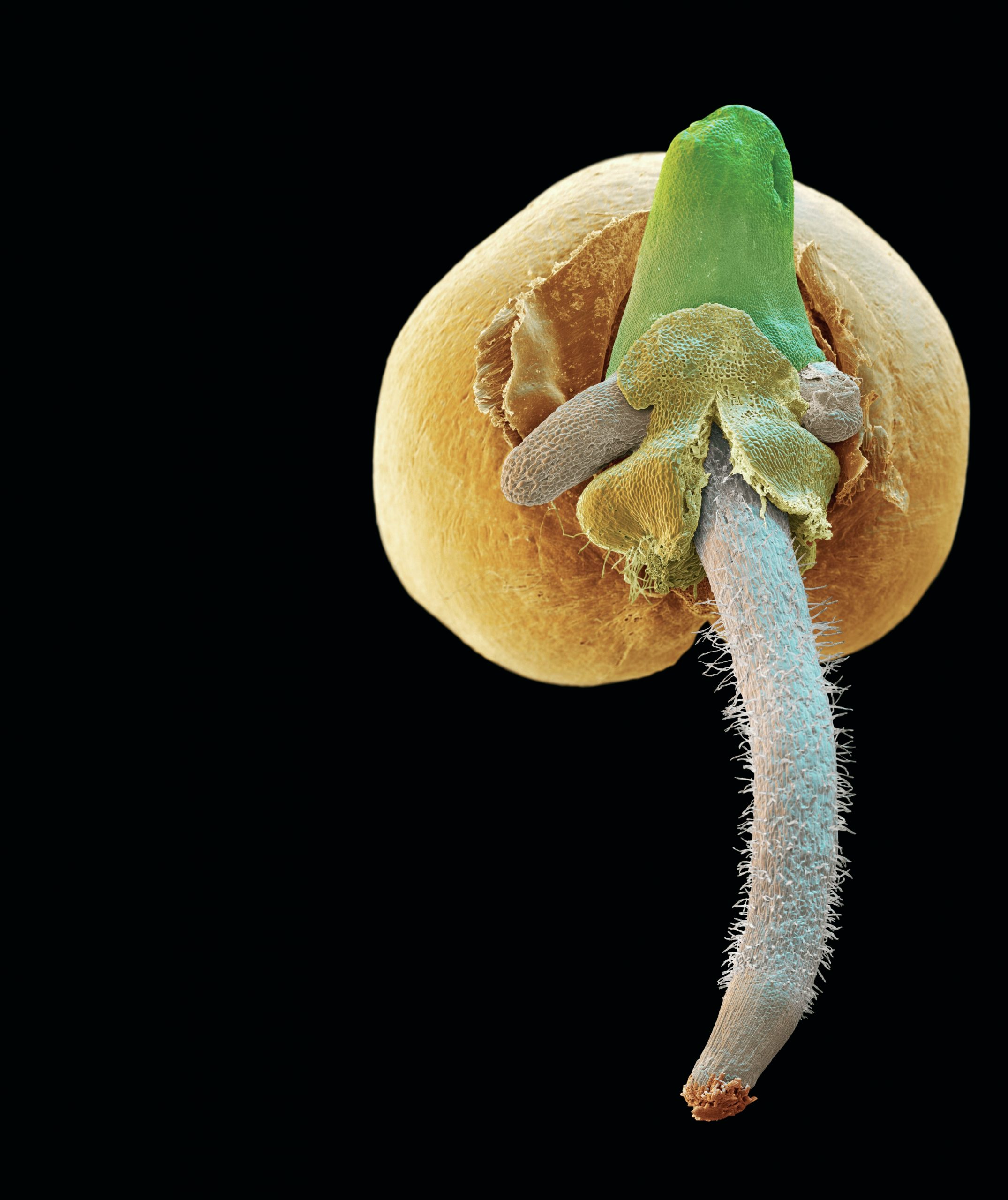
This image shows a young seedling examined using a scanning electron microscope. The seedling was first coated with an extremely thin layer of gold and then scanned with a beam of electrons. Where the electron beam struck gold, secondary electrons were emitted and picked up by a detector, thus forming an image of the surface of the seedling (just like the formation of an image on a television screen). The image was originally black and white — black where the beam did not strike gold (so no electrons were emitted) and white where the beam struck a surface pointing directly towards the detector. False colour has been added to help the viewer interpret the image.
The shoot that will form the first leaf has been coloured green. It is unlikely that the shoot was green at the time the seedling was prepared, as germination usually happens underground. The shoot therefore initially lacks chlorophyll, and so cannot photosynthesise. So, at first, seedlings are dependent on reserves stored in the seed, such as starch, for growth.
Your organisation does not have access to this article.
Sign up today to give your students the edge they need to achieve their best grades with subject expertise
Subscribe




